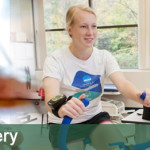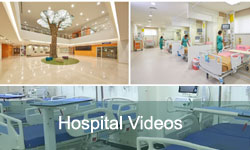Tag Archives: India Hallux Rigidus

Hallux Rigidus in India: Causes, Signs, Symptoms, Diagnosis and Treatment in Indian Hospital

Planning your medical trip to India is a very simple process with Joint Replacement Surgery Hospital India
- You just need to fill in our enquiry form and one of our executives will contact you soon.
- +91-9860432255 Call us at the given contact number for any assistance.
- Complete information regarding surgery is provided on our website.
What is Hallux Rigidus?
Hallux Rigidus In India is arthritis of the big joint of the toe. It is the second most common condition of the toe and next only to hallux valgus which is a condition associated with the big toe. This condition is more common in individuals in the age group of 30 to 60 years.
How do I know if I am a good candidate for Hallux Rigidus?
It is known to affect people who are pretty active and agile. The stiffness of the toe is especially noticeable on the upward bending caused by running or walking. This stiffness is known to cause considerable amount of pain. As a result of pain and stiffness a bump is created on top of the big toe.
Check out the Patient Testimonial, where the patient shares about their success stories from treatments through Joint Replacement Surgery Hospital India.
Hi, my name is Joseph Adeyemi, 43 years old from Nigeria. I have suffered from Hallux Rigidus on both feet for a few years. The restriction in my movements has become extremely painful to a point where any bending of the toe during walking was quite excruciating. Eventually, I was referred by my GP to an orthopaedic surgeon in India. I started searching about the Indian surgeons and hospitals, and came across your website. After initial consultation, I was convinced with everything and followed the procedure, I visited India. The hospital where I was treated was world class and hygienic. The doctors were friendly and made me feel relaxed. The nurses were quite supportive and caring. They looked after my needs throughout my stay. The services I received through them was fantastic and value for my money. I would definitely recommend anyone looking for any kind of treatments to get it done through this healthcare group in India.
Hallux RigidusProcedure & Recovery & Effectiveness
Hallux Rigidus in India reviews of patients indicate that the diagnosis is a trifle difficult. In some cases a physical examination by the physician will be more than enough. They will examine the foot for any form of bone spurs and then check the MTP joint by moving it up and down and in the process checking on how much motion is available without pain. X rays can be further done to identify complete damage.
The recovery depends on the type of surgery, which is conducted. The swelling in the toe is there for 2 to 3 months after the surgery and the complete healing may take around 6 months.
Why Opting Hallux Rigidusis necessary?
Stiffness and pain are the common symptoms, which may tend to worsen as the degeneration proceeds. In the early stages pain medication and injections may be of help. Mild forms of Hallux Rigidusis can be treated with removal of bone spurs. More advanced stages can be treated with joint replacement as a procedure of last resort with a joint fusion leaving your joint permanently stiff. Free Consultation Hallux Rigidus in India will enable you to go about the right course of treatment.
Why to choose an Indian Hospital for your Hallux Rigidus?
Each year a number of patients travel to India for medical related treatment. The hospitals have a huge say in the evolution of medical tourism in the country. Low cost Hallux Rigidus in India, though does not mean low quality of service, but one can compare it to the rest of the world. In these hospitals one would come across surgeons who have been part of several successful surgeries. When it becomes to the aspect of surgery safety and comfort of the patient is of utmost importance. Hence people resort to India. The surgeons tend to use non-invasive procedures to aid in the speed recovery and reduce pain. The surgery along with the recovery of the patient is on top of the agenda.
Hallux Rigidus Cost in India
Affordable Hallux Rigidus in India ensures that when you choose India as your next medical destination you tend to make significant savings in cost. When you get the surgery done in the western countries, you have to encounter a long waiting list which seldom happens in a country like India. You can get admitted and do the surgery the same day in India. In addition to this the support staff is friendly which lends a new spectrum to the course of treatment.
If you are really seeking treatments for Hallux Rigidus, kindly fill up the form for a free consultation with our surgeons. You will be provided with thorough analysis and suggestions regarding the treatments for Hallux Rigidus you are seeking.
Listen to the Voices of Our Happy Patients
FAQ’s
“Hallux” mean big toe and “Rigidus” mean stiff. It is a medical term, describing degeneration of the joint at the base of the big toe – called metatarsophalangeal, or MTP joint. It is the most common site of arthritis in the foot region. It is an important joint, as it has to bend every time you walk and propelling your body forward. Walking can be painful or limited as it is degenerated and stiffened. Most of the time, a bony overgrow (osteophyte) can cause a painful bump over the dorsal base of the big toe, resulted in painful impinging shoe-wear.
Hallux rigidus usually develops in adults at the ages between 30 and 60 years. No exact cause is agreed so far. It can be secondary to previous trauma, or due to the underlying abnormal foot anatomy, abnormal joint surface, surrounding soft tissue imbalance that increases stress on the joint. It is more common in distant runner or dancer who have repeatedly exert hyperextension of the big toe.
The patient may experience pain in the joint when you walk, especially as you push-off on the toes when walking up/ down stair. There is swelling around the base of the big toe, especially over the dorsum (top) of the big toe with an associated bony bump. The joint will be stiff at a late stage due to the degeneration and the dorsal bony bump.
History: pain, stiff, dorsal bunion
Examination: Limited big toe bending, especially on upward movement, bump over the top of the base of the big toe. The physician will try to differentiate if the symptom is arising from the bony bump, or the joint so as to decide the type of surgery if indicated.
X-ray: Narrowing of the MTP joint due to wear of joint cartilage, bony spurs (osteophyte). They are clinically graded into early stage (with the joint still preserved) and late stage (with the joint being obliterated).
Non-surgical treatment
- Non-steriodal anti-inflammatory drug (NSAID) such as ibuprofen may help reduce the active swelling and pain relief.
- Ice packs or taking contrast baths may help for a short period of time.
- Shoe modification with a widen toe box to accommodate the bump, stiff-soled shoe with a rocker bottom design may help to prevent bending force on the joint. Orthotic with a steel shank or metal brace in the sole can be measured with similar action. These are not effective to stop the condition from progressing but just symptomatic relief.
- Injections – a. Steroid, b. hyaluronic acid.
Surgical treatment: Different types of surgical treatment are commonly practiced depending on the clinical examination and radiological grading of degeneration.
- Cheilectomy operation: This is a simple operation to remove the osteophytes that limit the range of motion. It improves range of motion for wearing higher heel shoes or for running, and, though it often reduces pain, this is not guaranteed. It takes 3 months to recover 80% and 6 months to fully recover. Naturally, this does not alter the natural history of the underlying problem of arthritis; it merely reduces the pain from impingement of the osteophytes, which are caused by the arthritis. The potential problem is risk of further joint degeneration and require further surgical procedure, it is however a buy-time procedure.
- Autologous interposition arthroplasty: It is using a free ipsilateral gracilis tendon graft is for patients with severe hallux rigidus with moderate to high activity levels and who do not wish to undergo fusion.
- Fusion operation. This is a procedure to remove the joint and join the bones of the foot and toe together. This reliably removes pain and allows one to return to running.This is a procedure indicated for those with pain due to both bony spur and the joint. It is a more assuring procedure as the diseased joint is converted to a stable one-piece bone. The trade-off is the big toe become stiff, but we usually fused it in a physiological position for walking. A plate and screws are used to stabilize the fixation for the bone surface to heal by 6-8weeks.
- Arthroplasty (excision of the whole joint +/- replacing with a spacer or an artificial prosthesis) is a joint replacement, which significantly reduces pain and allows good function. It may have a limited life of approximately 10 years and require revision or a fusion operation later. This is an alternative procedure to arthrodesis for those older people who place few functional demands on the feet. It is not well accepted as the potential risk of prosthesis complications eg. wear, dislocation, loosening, etc.
Surgery is usually done under general / spinal / regional anaesthesia. This includes a general risk of anaesthetic drug and specific risks which our anaesthetist will explain to you before the operation accordingly. General surgical risk includes infection, nerve injury, tourniquet risk, swelling and stiffness
- Specific risk for Cheilectomy: recurrence / progression of symptom
- Specific risk for Arthrodesis: stiff joint, implant loosening, impingement, non-union, delayed union. Shortening of big toe.
- Specific risk for Arthroplasty: prosthesis dislocation / loosening
Steriod injection is done by some GP / Surgeon, but it is only a temporary effect and potential risk of infection, bony necrosis. Minimal invasive with percutaneous screw fixation is advocated but only short-term and small series report.
Cheilectomy: Since there is no joint procedure done, but only bone spur excision, immediate return to normal walking is allowed. The wound will usually take 10-14 days to heal. Early passive big toe movement is advised to prevent the joint stiffness is the main physiotherapy recommended. Takes months to settle.
Arthrodesis: This requires longer rehabilitation as it involves timing for stable bone growth, which usually takes 6-8 weeks. Patient will be protected with cast immediate post-operation and educated for non-weight bearing walking during initial 6 weeks. Radiological check will make at around 6 weeks to confirm if full weight bearing walking is advisable. Patient will be unable to wear high-heeled shoes due to the stiffened big toe (or we sometimes modify the position of fusion so as to tailor the patient’s reasonable need in terms of shoewear).
Arthroplasty: The rehabilitation is similar as arthrodesis, but early mobilization is essential to keep with the surgical benefit. Weight bearing is avoided for soft tissue stabilization, which usually takes 4-6 weeks.
It depends on the type of procedure as well as the occupation requirement of the individual. 2 – 6 weeks as mentioned under different procedures.
Yes with both cheilectomy and arthrodesis, but with limited big toe flexibility in the later case.
You can most definitely choose hotels as per your convenience to you and your budget.
You can talk to the doctor and satisfy all your medical queries. You can also send us your queries for answers from the top doctors.
To know about the procedure of getting an Indian Medical Visa, please go to our website where you will find all the details regarding the initial procedure. You can also send us a query regarding the same.
Many hospitals in India have language translators to help you communicate better and effortlessly with the doctors and medical staff.
Joint Replacement Surgery Hospital India offers highest quality bone and joint health care with attentiveness, care and compassion to meet the needs of the patients and their loved ones. The medical team includes board-certified orthopedic surgeons who are familiar with all the aspects of the musculoskeletal system. Our hospital uses the most advanced technologies available for the orthopaedic procedures and has a lower complication rate.






